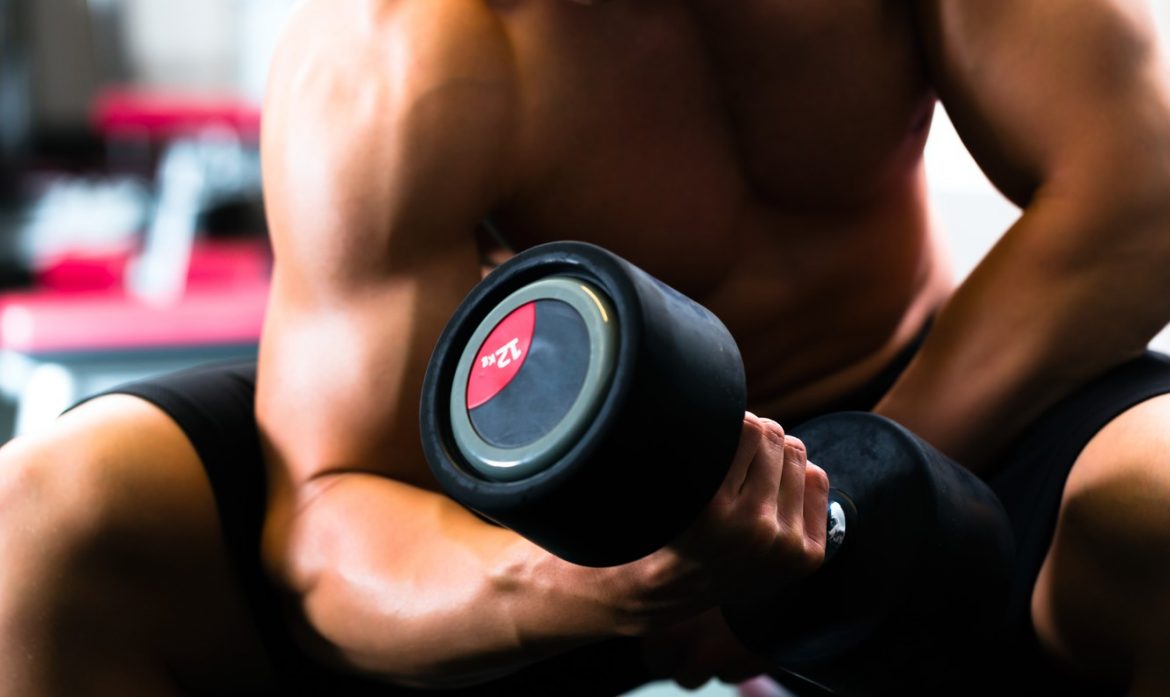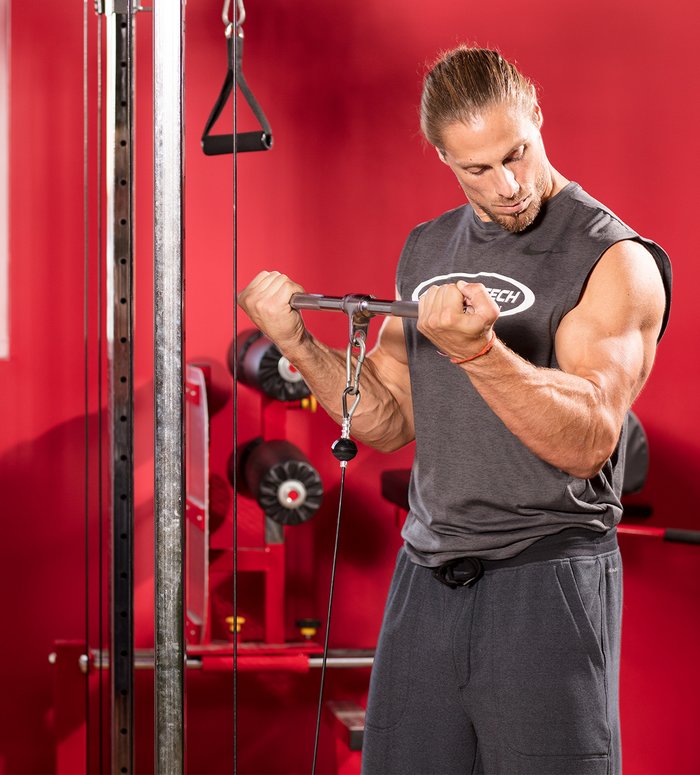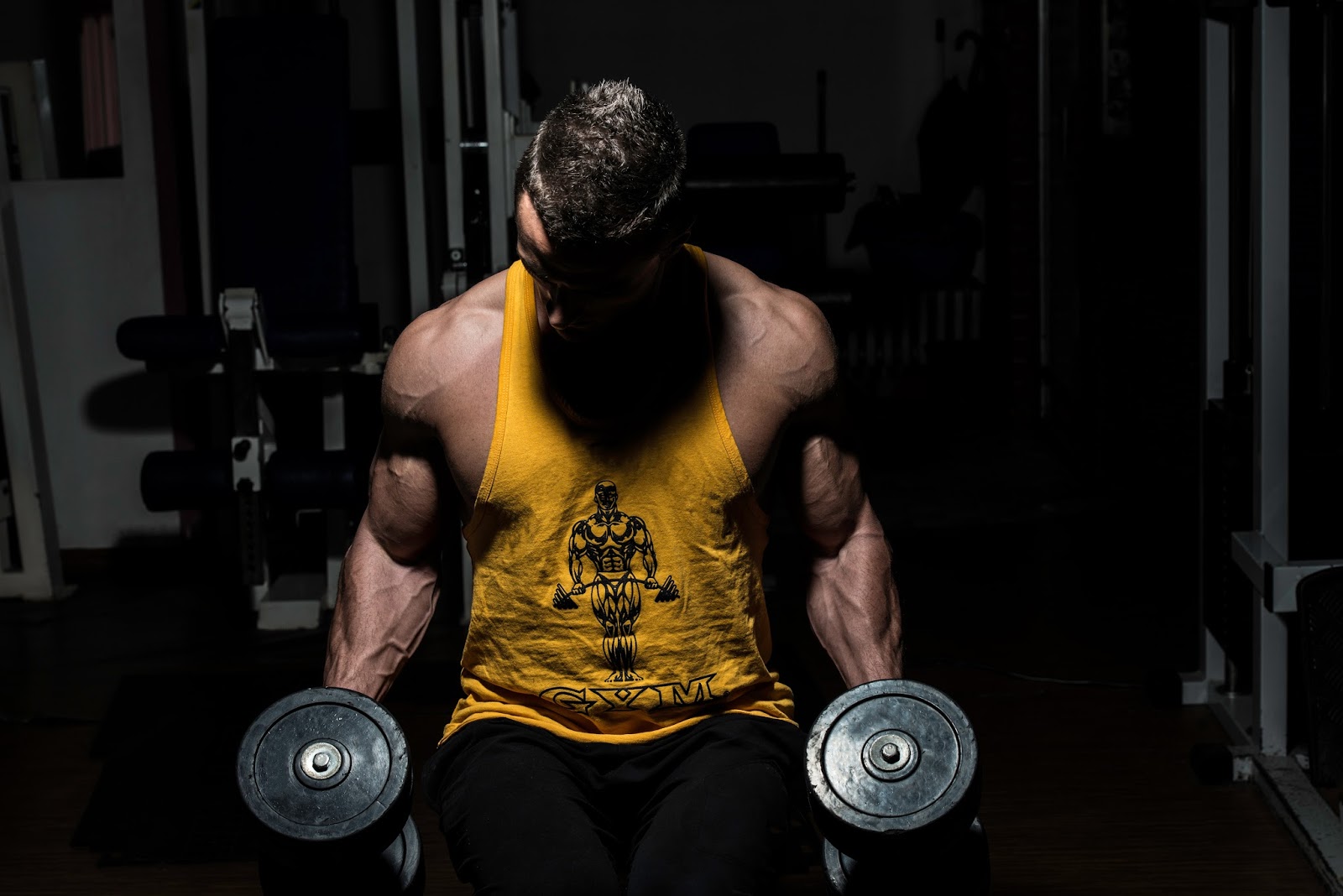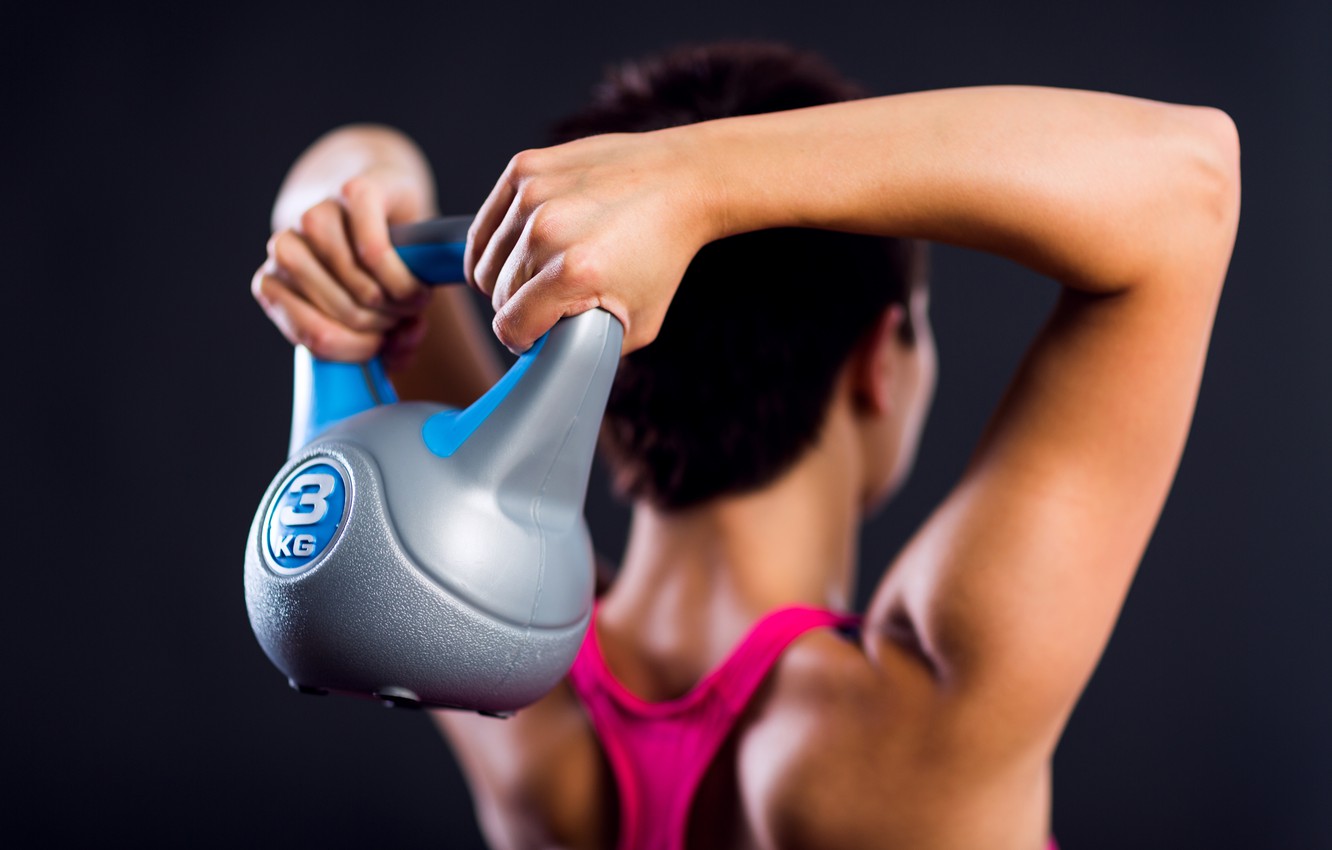
Arm training
Arm training for weight is considered an important part of the entire system of training in bodybuilding, but in at the same time, it is not key or paramount. But still, in order to achieve the desired result, you need to know the main principles of the technique for performing various exercises, the place of training arms in the training split, as well as the secrets of working out individual bundles of triceps and biceps.
Training for strength and weight of the arms can be performed as professional athletes who do not have problems with the lag of the muscles of the arms, and beginners who spent more time pumping their legs or abs. The only difference between the training of athletes of different levels is the weight used and the number of repetitions.
Everything described below is based on personal experience and observations.
Do hardgainers need arm training?
There are 2 opposite opinions on this matter. First: do not train your arms at all – they already get enough load when performing basic exercises on the chest, shoulders, and back. Second opinion: hands need to be trained.
Observations show that the second opinion is correct. Guys who do arm exercises progress faster. Including in the bench press and deadlift. This is because the arms are often the weak link in deadlifts, pull-ups, presses, etc. And more developed arms allow you to train with more weight in basic exercises, which has a positive effect on overall development.
Typical mistakes in training hargainer’s arms
Starting to train arms , the hard gainer is often faced with the fact that they stop growing. The most common mistake is hand overtraining. This happens because there is an excessive load on the hands. For example, an athlete performs 4 sets of barbell rows in a workout, 4 sets of bench press (in which the arms work intensively), and then enthusiastically does 4 more sets of barbell lifts for biceps and 4 sets of French press. In total, we get 8 approaches in which the biceps work (4 points of the barbell pull + 4 points of the barbell lifts) and 8 on the triceps (4 points of the bench press + 4 points of the fr. At the same time, only 4 approaches fall on the back and chest. That is, we see an obvious bias. Hands with small muscles receive more stress than large chest and back. The result is hand overtraining.
The second variant of hand overtraining is associated with frequent (2-3 times a week, and sometimes more often) hand training. Through this, in my opinion, every jock goes through. As a result, the muscles of the arms do not have time to grow or even recover. Do not forget that they also have to work in exercises for the chest, back and shoulders. After all, it has long been clear to everyone that muscles do not grow during training, but during rest. Frequent exercise results in a decrease in the size and strength of the arm muscles. As a result, a decrease in working weights in other exercises.
The next mistake is strength-style arm training with high weights and low reps. As a result, the strength of the hands increases, not their size. This can be observed with a typical hard gainer training: from basic low-repetition exercises (bench press, squat, deadlift) body weight increases, but mainly due to an increase in chest, back, and legs. Hands tend to lag behind. Why so?
Here I will express my thought on this matter. Human hands (like other primates) are designed for less strength work than the back and chest. For example, hands have historically performed more monotonous and precise work – digging the ground, throwing stones, hitting with a stick, climbing trees, holding something, carrying things, etc. Therefore, the muscles of the arms have fewer fast (power) muscle fibers, and a lower potential for their growth in the total mass of the arms. We get that under power loads, the growth of the muscles of the arms is small.

I would like to note one more mistake. This is a well-known and dear cheating. You can always see in the gym how curling with a barbell turns into a reverse grip on the barbell. Failure to understand cheating leads to the fact that the load, which is supposed to be for the biceps, goes to other muscles (back, legs). And then we hear complaints that despite working with crazy weights, his arms still didn’t grow (he didn’t even feel the load on them). In this case, cheating takes the strain off the hands. The purpose of cheating, on the contrary, is to increase the load, when it is used on the last repetitions in the approach to accelerate the bar in the lower phase of the movement, while in the upper phase of the amplitude, the bar is raised by the force of the biceps, and then slowly lowered.
Nowadays – for straight people and hardgainers in particular – it is considered a mistake to be fond of isolating exercises such as concentrated curls, flexions on the Scott bench or extension of arms with dumbbells from behind the head. Allegedly, such exercises have little effect on the growth of muscle volume. But in reality, everything is not so simple. At some point, they can be of significant benefit. Remember, for example, such comrades as Arnold and the same Larry Scott, who have excellent biceps, including these exercises. We will not delve into the theory, but let us define ourselves as follows: beginners should not do these exercises, but experienced ones can experiment.
How to train your hands?
I will not quote some specific plans for shaking hands, there are thousands of them in books, magazines, the Internet. But it’s not about plans. You yourself will be able to make yourself a complex for your hands, knowing the main points. We will dwell on them in more detail.
From all of the above and from personal observations, we can draw several conclusions and recommendations for pumping hands.
- It is necessary to train your hands. And hardgainers as well.
- Train your arms no more often than other parts of the body. As a rule, this is once a week or once every 5-10 days if your split is designed for more than a week.
- The number of approaches on the arms should be less than on the chest and back, because … the arms are actively involved in training these muscles. I would suggest limiting the number of sets to the arms to a range of 50-70% of the number of sets to the chest and back. For example, if you have 4 sets for your chest and back, then for biceps and triceps in 2, maximum 3 sets. If there are 6 approaches to the chest and back, then 3-4 to the arms. If 10, then, respectively, 6-7. An interesting point: the triceps are larger than the biceps. Therefore, if you do 3 sets for biceps, you can try 4 for triceps, for a set more.
More about sets
. The arms are made up of small muscles attached at different angles. Therefore, you should not do many approaches in one exercise, but rather do more different exercises. Do no more than 3 sets per exercise. If you have 4 or more sets of biceps or triceps, then it is better to divide them into 2 exercises of 2 sets. For example, for biceps, you have 4 sets in total. Do 2 sets of bicep curls and 2 sets of twist dumbbell curls. In this exercise, the brachialis is also pumped, which will give your biceps extra volume.
Projectile weight and number of repetitions
. Don’t get carried away with heavy weights and low repetitions. The optimal number of reps per arm is 10-12, you can vary from 8 to 15. You should not have less than 8 reps in the last set and more than 15 in the first.
Technique
. Try to keep your arm muscles under stress throughout the entire set. Those. do not fully extend your elbows and do not straighten your arms in extreme positions, keep them under tension.
If you use cheating, then only correctly and only in the last few reps of the last approach. In general, at the initial stage, do not get carried away with intense techniques such as forced and partial reps, cheating, drop sets. In the future, you can use such techniques in the last approach of the exercise.

Do you need a refusal?
I think that refusal to train the muscles of the arms is necessary, they are quite enduring … I recommend doing the following. On the first set, do as many full reps as you can. For example, you have 2 working approaches. In the first, you get 10 reps, and you feel like you will not completely master the 11th. Stop! And in the second approach, go to the end. For example, do 9.5 reps and add 2-3 more partial reps.
Rest between sets
keep it small, because small muscles recover faster than large ones. In addition, we train our arms not in a power mode, which means that 1-1.5 minutes is quite enough.
Splits
. There are 3 popular splits – triceps workout on bench day and biceps on deadlift day; on the contrary. training biceps on the day of the press, and the triceps on the day of the deadlift; and joint training of biceps and triceps on a separate day. All 3 options have pros and cons, but that’s not the topic of today’s article. Choose the option you like, then try others.
Exercise order
. Regardless of the split, train your arms after large muscle groups – chest, back, and even legs. So that the decreased energy and tired hands do not limit your results in basic presses, deadlifts, squats. In arm training, too, first do more basic exercises (standing biceps with a barbell, press with a narrow grip, etc.), and then more isolating.
The best exercises for you
. The internet and magazines are full of the best hand exercises. Choose from them your favorite ones. After all, the best exercises are those that you like to do, in which you feel the work of the muscles of the arms, this is very important. But from time to time, change them to other equally favorite ones. Add one brachialis exercise to your program. As I said above, it will add volume to your hands.
And more
Guys, when pumping up your hands, no one canceled good nutrition, good rest and healthy sleep. Don’t forget this! Hand training is an additional load for the body, therefore, more nutrients and adjustments for recovery are required. Good luck!

